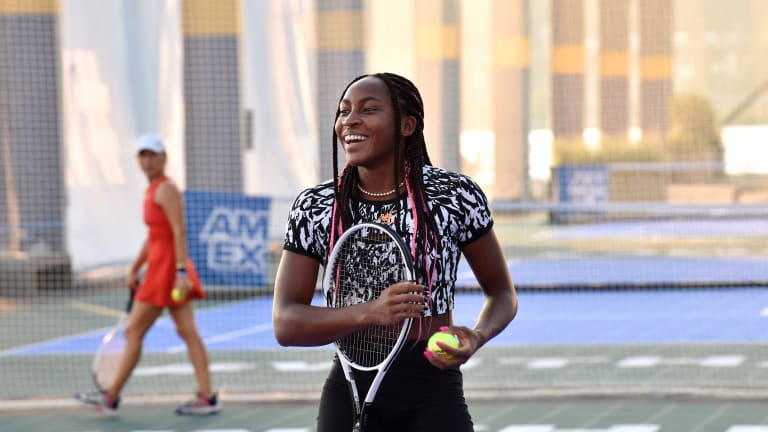US Open tournament director, USTA CEO, doctors address Covid protocols and concerns before fans arrive at Flushing Meadows
By Aug 25, 2021Eric Butorac will replace Stacey Allaster as US Open tournament director
By Nov 17, 2025Beyond The Champions: 2025 US Open Winners and Losers
By Sep 10, 2025In US Open defeat, Jannik Sinner faces his shortcomings
By Sep 09, 2025Amanda Anisimova's US Open fortnight wasn't just "incredible"—it was redemptive
By Sep 09, 2025Overcoming Doubt, Finding Deliverance: Six WTA takeaways from the 2025 US Open
By Sep 08, 2025Service and a smile: How Carlos Alcaraz conquered Jannik Sinner at the 2025 US Open
By Sep 08, 2025Carlos Alcaraz captures sixth Slam and second US Open title, dethrones No. 1 Jannik Sinner
By Sep 07, 2025Alcaraz vs. Sinner US Open final start delayed by 30 minutes
By Sep 07, 2025Blinding Lights: Amanda Anisimova rues missed opportunities, serve woes after US Open final
By Sep 07, 2025US Open tournament director, USTA CEO, doctors address Covid protocols and concerns before fans arrive at Flushing Meadows
"The goal is not to prevent all cases of COVID," said Dr. Brian Hainline of the US Open, which will permit 100 percent crowd capacity. "The goal really is to be certain that we don't have an outbreak of COVID that's going to be unusual or that we would regret."
Published Aug 25, 2021
Advertising
Advertising

No proof of vaccination is required to attend the US Open, but it is required for indoor dining.

Fans are not required to wear masks outdoors—which includes Arthur Ashe and Louis Armstrong Stadiums, even when their roofs are closed.
Advertising
Advertising
Advertising

With Serena Williams, Roger Federer and Rafael Nadal all withdrawing from the US Open, Coco Gauff will be one of the main attractions at Flushing Meadows.
© 2021 Getty Images
Advertising
Advertising

Stefanos Tsitsipas' comments about Covid vaccines last week in Cincinnati understandably rankled many.
© Getty Images